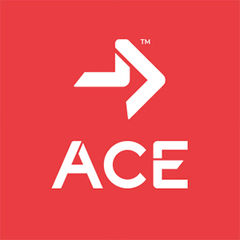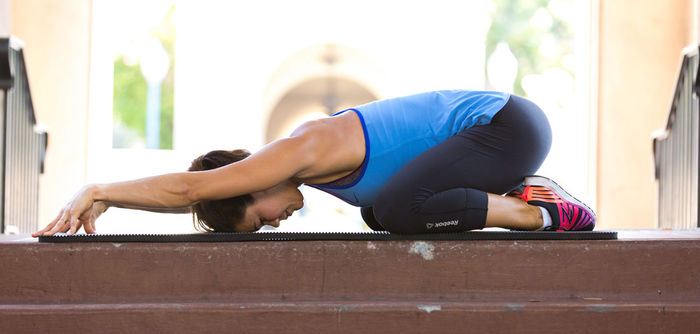Last Updated October 20, 2023 (originally published September 26, 2014)
Given the diverse range of shapes and sizes among humans, it's only natural to consider that different eating plans and training routines might be more fitting or effective based on individual body types. Unfortunately, this perspective has given rise to numerous enduring misconceptions in the health and fitness industry.
Let's go back to the basics: Conversations surrounding somatotypes (the scientific term for human body types) often hinge on the idea that individuals can neatly fit into one of three distinct categories—ectomorph, mesomorph and endomorph. The belief is that somatotyping can offer general insights into how a person should approach exercise, diet, lifestyle and physical activity. However, the reality is that a person's somatotype characteristics can change over time, and many individuals embody a combination of all three somatotypes.
To clarify, while the three somatotypes—ectomorph, mesomorph and endomorph—are recognized in scientific literature, determining a person's placement in a specific category is more complex than it may initially appear. Transitioning from somatotyping to offering exercise recommendations and dietary guidelines often results in the dissemination of misinformation.
Here is a quick description of the three somatotypes:
-
Ectomorph: Characterized by a slim body frame, small shoulders and hips, long arms and legs, and less muscle mass
-
Mesomorph: Characterized by a medium build with higher-than-average muscular development, a low body-fat percentage, broad shoulders, and a muscular chest, shoulders and limbs.
-
Endomorph: Characterized by a larger, rounder body shape, high levels of body fat, a propensity to gain weight, and shorter arms and legs.
Common Myths about Mesomorphs
The following are some common myths that you may hear from clients or potential clients or read about in popular media. Your job is to sift through these types of statements and look for the evidence—which, in this case, you will not find.?
-
People with a mesomorph body type (and the other body types) should eat certain foods while avoiding others. The best approach to nutrition is to find a healthy eating plan that the client can stick to over the long haul. There are no hard and fast rules. And, the negatively worded guidance to “avoid” a favorite or preferred food is not likely to lead to success.?
-
Mesomorph body types represent individuals who don’t need to exercise to stay healthy. Because these individuals are more muscular and “fit looking,” many people make the mistake of thinking that they don’t need to exercise to maintain their appearance or stay healthy. Just as a person with an endomorph body type may be generally healthy, a person with a muscular appearance can have underlying health conditions that belie their appearance.
-
People with the mesomorph body type can eat anything they want without consequences. This is similar to the myth above, as it suggests that appearances equate to health. People with this body type can gain fat just like anyone else, so the notion that they can eat anything they want without it impacting their health or fitness level is simply false.
-
When a person has a mesomorph body type, they must have a great work ethic and love exercise and sports. Just because a person looks fit or muscular doesn’t mean that they will need less support when it comes to motivation and adherence, or with finding a type of physical activity they enjoy.
A Controversial History
The three somatotype classifications made their debut in the 1940s, courtesy of Dr. W.H. Sheldon—a psychologist who brought them into the limelight through his book, The Varieties of Human Physique. Dr. Sheldon's objective was to categorize individuals based on how closely they aligned with the three body types and then draw connections to traits like temperament and even criminal tendencies.
While Dr. Sheldon's theories related to constitutional psychology sparked controversy, his work’s enduring impact on physical education and the fitness industry is undeniable. However, this original method of categorization undermines the essence of personalized coaching and programming, which are integral components of effective health coaching and personal training. Relying solely on body types for decisions also opens the door to racial and cultural stereotypes. For instance, associating a particular race with higher endomorphy may lead to misguided assumptions about personality traits linked to body fat, perpetuating stereotypes like laziness, selfishness and a lack of self-control.
This serves as an excellent example of implicit bias that health coaches and exercise professionals must make ongoing efforts to recognize and address in their work. Unfortunately, individuals often attach personality traits to the three body types, fostering positive feelings for mesomorphs and ectomorphs while harboring negative stereotypes for endomorphs.
Final Thoughts
Categorizing people into the three somatotypes should not overshadow an individualized, client-centered approach to behavior change, as this practice provides no insight into how a person will respond to diet and exercise, let alone anything about their personality, temperament or level of self-control. A person's appearance should not dictate their macronutrient balance, the number of reps in a resistance-training set or their overall goals. Instead, let each client's unique goals and values guide your programming and approach to long-term lifestyle change. As a health coach or exercise professional, your objective is to deliver a tailored plan for each client, and making assumptions without evidence will only hinder that process.
Check out this course to explore how you can identify and address your implicit biases and strengthen your communication skills: Taking Action with ACE: Practicing Equity, Diversity and Inclusion as a Health and Fitness Professional?(worth 0.3 ACE CECs).




 by
by 









 by
by